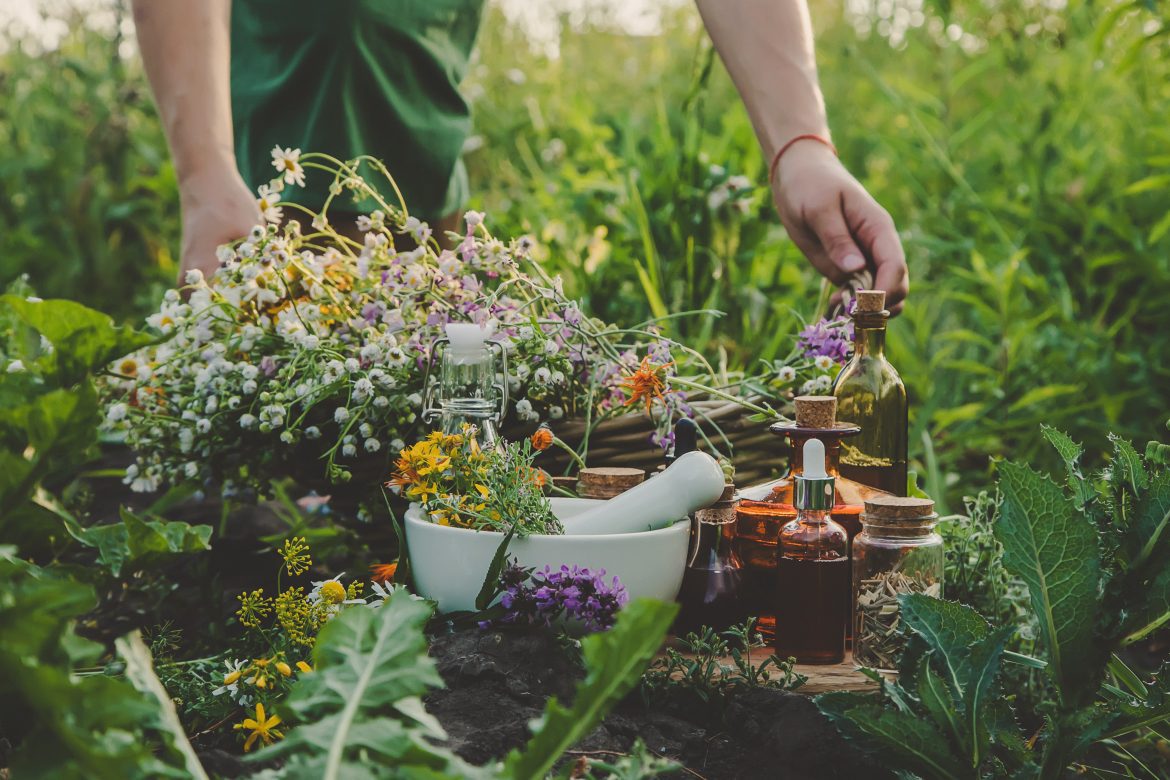Many common herbs offer significant health benefits, supporting immunity and relieving minor ailments. Growing these herbs in your own garden provides easy access to these remedies, all while deepening your connection to nature.
1. Echinacea (Echinacea purpurea)
This vibrant herb is most renowned for its immune-boosting qualities, often used to shorten the duration of colds. Echinacea is easy to grow in full sun, and in well-drained soil. Its purple flowers will brighten your garden and provide you with an essential herb for your natural medicine cabinet.
2. Yarrow (Achillea millefolium)
Yarrow is a hardy herb known for its anti-inflammatory properties and ability to treat wounds. It thrives in full sun and well-drained soil. The feathery foliage and colourful blooms make it a lovely addition to your garden, and it’s versatile in treating both digestive and external ailments.
3. Chamomile
Chamomile is famous for its calming properties, especially in teas that help with sleep and
relaxation. It grows best in mild climates with full sunlight and well-drained soil. The delicate flowers also add beauty to your garden, making it both a therapeutic and ornamental addition.
4. Catnip (Nepeta cataria)
While famous for attracting cats, catnip also has calming effects on humans. It’s commonly used to alleviate stress, anxiety, and digestive discomfort. Catnip grows well in full sun or partial shade and is highly resilient, making it ideal for novice gardeners.
5. Peppermint
Peppermint is well-known for its digestive benefits, often used to relieve nausea, bloating, and indigestion. This hardy herb thrives in well-drained soil and partial shade, making it an excellent choice for your garden or in a pot on your kitchen counter. It’s not only medicinal but also adds a refreshing scent to your garden or home.
STARTING YOUR MEDICINAL HERB GARDEN: A STEP-BY-STEP GUIDE
Now that you know the benefits of these medicinal herbs, here’s how to start your own herb garden:
Step 1: Planning your garden
Consider which herbs are most useful to you and your family. Think about common health issues you face – whether it’s calming chamomile for stress relief or peppermint for digestive discomfort – and tailor your garden to those. Assess your available space, whether it’s a backyard or a few containers or planters.
Step 2: Choosing your herbs
Start with 5-10 herbs that suit your climate and gardening skills. Focus on easy-to-grow options like peppermint, chamomile, and echinacea. Group herbs by their growth habits (annuals vs. perennials) and size to ensure proper spacing in your garden layout.
Step 3: Selecting the site
Choose a sunny, sheltered location for your garden, one that receives light from the north, east, or west. Ensure the soil drains well. If your soil is heavy, improve it with compost to encourage good root growth and prevent waterlogging.
Step 4: Designing the layout
Plan your garden’s layout to suit your space and aesthetic. For a formal design, use straight lines and geometric shapes; for a more relaxed look, use curved paths and organic shapes. Taller herbs, like echinacea and yarrow, should be placed at the back, while shorter herbs, like chamomile and catnip, can go in front.
Step 5: Preparing the soil
Clear the area of weeds and debris, then level the soil. If you’re adding hardscape elements like pathways, do so before planting. Mix compost or organic material into the soil to fertilize. Water the area and allow it to settle overnight.
Step 6: Planting your herbs
Water your herbs thoroughly before planting. Loosen their roots gently and place them into the holes, adding organic fertilizer such as bone meal or fishmeal in there to encourage healthy growth. Using your hands, cover the roots with soil and pat down; water again to settle the soil.
STARTING FROM SEEDS
Step 1: Follow the instructions on your seed packets for the best results, especially with regard to soil temperature and moisture levels. Keep the seeds moist and provide a humidity dome for better germination. For seedlings, acclimate them to outdoor conditions gradually before planting them in your garden.
Step 2: Spacing and arrangement
Before planting, lay out your herbs to ensure proper spacing for their full growth. Some herbs, like yarrow, will spread, while others, like echinacea, grow tall. Giving each plant ample room ensures they’ll thrive without overcrowding.
Step 3: Caring for your garden
Water your newly planted herbs deeply but less frequently, avoiding over-watering. Most medicinal herbs thrive in well-drained, slightly rocky soils. Keep an eye on each herb’s specific care needs, adjusting sunlight, watering, and soil conditions as necessary.
With these steps, you can easily grow your own medicinal herb garden, providing you with natural remedies and adding beauty to your outdoor space. Whether you’re using peppermint for digestive relief or chamomile for relaxation, your garden will serve as both a wellness tool and a tranquil escape. Happy gardening!


